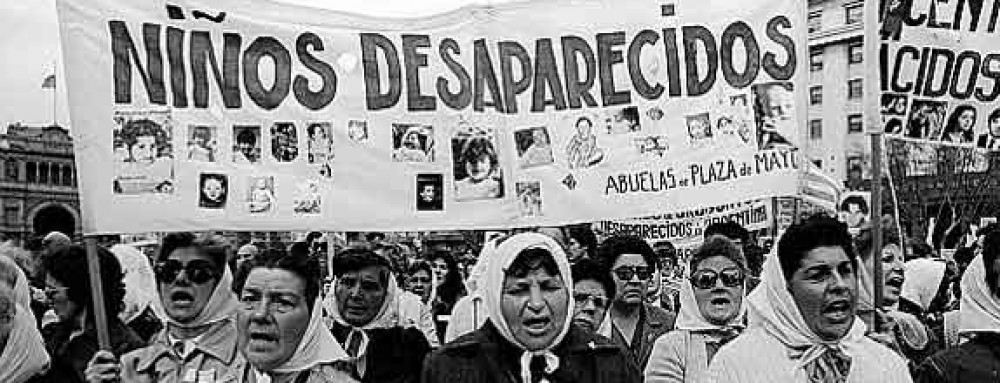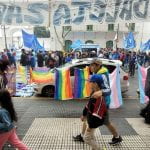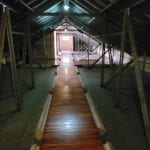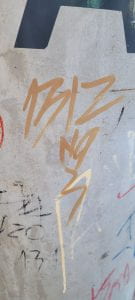Politics are a central theme in Argentina, and there are unique qualities that I have never witnessed in another country. Rather than having a defined left and right, there are the Peronists (a Populist party) and those opposed to them. I have not done enough research to know what the truth is (it seems almost impossible to discern) but claims of corruption have plagued the Peronists since their founding. The current Vice President Cristina Fernández de Kirchner is currently appealing a six-year prison sentence in the Supreme Court. Whatever the fact of the case may be, she is clearly beloved by the people as seen in the photos of the Independence Day parade that was essentially a demonstration in her favor. Noam Lupu writes in his article The End of the Kirchner Era about the history of the Kirchners in politics and suggests that the voting public have similar values, and economic issues that are possibly beyond the grasp of any one political party are their main concern. Either way Argentina is celebrating 40 years of Democracy as their Human Right.
Author Archives: jharrison51
The Excavation of Club Atletico
One of the last Memory Sites we visited was Club Atletico. What made it so different from the other sites we had visited was its location as an outdoor excavation underneath a highway overpass. This shows the precariousness of some of these sites, as it could easily have been destroyed in the construction. Although it was not specifically mentioned, Club Atletico clearly relates to Mercedes Doretti and Jennifer Burrell’s article on Forensic Anthropology and Human Rights. Their observations discuss the difficulty of reconstructing these sites and the intersectional disciplines needed for the process. It made me think of how I perceived the site as an archeological site, but digging up the recent past rather than an ancient civilization. It also touched on how excavating a site like this is so important for evidence in ongoing trials, to ensure that those imprisoned there receive the justice they deserve.
My Day At ESMA
I had to leave the trip a few days early to participate in a wedding, so when I had the opportunity to go back to Buenos Aires in the middle of the trip, I made it a point to visit ESMA, since I would have to leave the day before we went as a group. This was for me the most personally effective Memory Site. I believe part of it was attending on my own, and there being very few people attending that day. Being in those spaces alone and knowing what happened was truly haunting. I also felt that the controversial use of multimedia including projections and videos of personal testimonies (with English signage and subtitles) helped me to get a sense of what had occurred there. I especially appreciated the use of English as well as Spanish because it felt to me as if that opened up the site to people from around the world, and allowed the intention of informing people of the atrocities that had occurred so that they would never happen again to be a statement not just for Argentina but for fascism and dictatorships around the world. I understand that many survivors feel that the space should be left unchanged, but Emilse B. Hidalgo makes a good point in their article on Argentina’s Former Detention Centers, that the spaces must continue to exist after the passing of those who understand their context, so modifications that help future generations connect to the atrocities that happened there have to be considered necessary.
Education As a Human Right
One of my favorite parts of our trip was the visit to the original buildings of the Cordoba University. Our phenomenal docent Guadalupe ended our visit with a story about how a student’s defending their dissertation was linked to their connections, and how much wealth and religious power they wielded. She told us the story of The Cordoba Manifesto, and how the students protested the unfair hierarchies and staged a walkout. This made me think about how education is a Human Right, and how we as students need to stand up for our rights if we discover corruption in the educational system.
Photographs as Pieces of the Desaparecidos
Photographs of the Desaparecidos are a common sight at most Memory Sites, but this one is particularly effective to me. I believe that it is because the photographs take up the entire space of the room. Julia Reineman’s article on portraits of mourning discusses how a photograph can be a transitional object to still have some piece of the missing person. I believe that is why it is so powerful to stand in this room and be surrounded by the Desaparecidos. We cannot deny their absence when we are confronted by the photographs donated by their grieving families.
Symbolism in Argentine Art
 We spoke a lot about how certain images have become symbolic in the Argentine consciousness. What do these paintings symbolize for you?
We spoke a lot about how certain images have become symbolic in the Argentine consciousness. What do these paintings symbolize for you?

These paintings are by the artist Maria La Serna and were a part of her exhibition Terrenos de la expresión (Grounds of expression) at the contemporary art museum in Cordoba. They are meant to show impressions of daily life and are not related to the Desaparecidos. The dress is not meant to show an absence, the white scarf belongs to a butcher rather than a Madre de Plaza de Mayo, and the small portraits are of her friends and family. I wanted to call attention to the fact that while it is important to understand the cultural symbolism in Argentine art, we also must be careful not to bring in preconceptions and to understand the context.
Banned Books
I noticed this section on a shelf at D2 that contained banned books because of the rainbow, and my familiarity with the novel Kiss of the Spider Woman by Manuel Puig, which I know contains Gay themes. I asked Fernando about it, and he confirmed that all of the authors on the shelf were gay. I also asked if LGBTQ+ people were singled out despite their politics, and he responded that only political dissidents were held as prisoners. Given the history of dictatorships like Cuba and Nazi Germany putting LGBTQ+ in concentration camps, I do wonder why these books were banned, and if the community suffered any special persecution. With the anti-LGBTQ+ laws being passed in our country, should we be concerned about other Human Rights violations on the Horizon?
Lies Behind the Facade
I was initially impressed by the beauty of this Gothic cathedral, La Iglesia del Sagrado Corazón de Jesús. I am a huge architecture buff, and its façade was one of the most impressive I have ever seen. However, a façade can hide what hides behind it, and in this case, the hidden truth is that it was created by the forced labor of African slaves and indigenous people. This is a major debate in the Philosophy of Art currently, can you still appreciate the beauty in a work of art if the artist or the creation of the art is problematic? Would a plaque or sign on the church detailing the history be a step in the right direction?
Political Graffiti?
These pictures came from the pillars of the Women’s Memorial that many have posted about. I was conflicted when I saw that many people had written things that were vulgar and unrelated to the memorial. I wondered if people understood the Memorial or just thought of it as another place to tag. I could understand the 1312 tag (the numbers corresponding to ACAB-All Cops Are Bastards. The police complicity in the wrongful kidnappings and murders seemed to warrant a statement of solidarity expressed by these tags. Lesbianizate seemed less appropriate, but could possibly be seen to show a feminist statement.





















